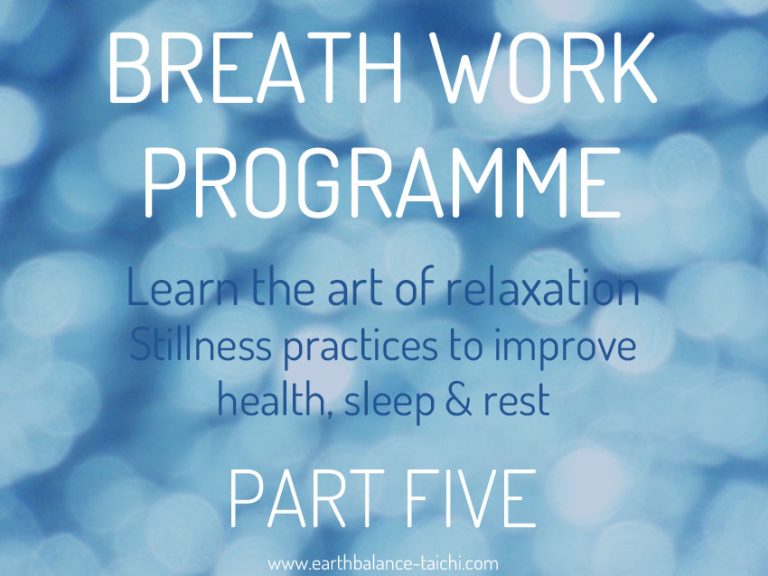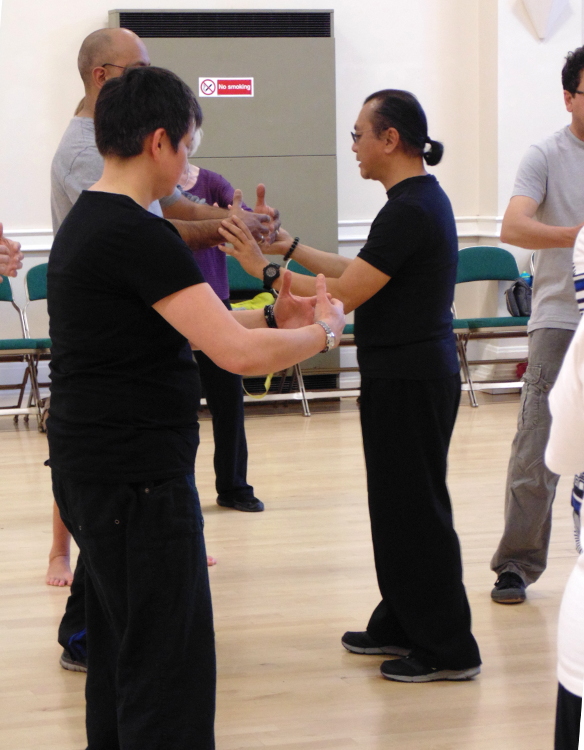Pain Instructs


Pain Instructs
Training Tai Chi and Qigong during times of injury, chronic and acute pain can offer some unusual benefits. Simply put, pain instructs. It's one of the responses in the body that is not subtle, it hurts and we react to it.
When you experience physical pain in your Tai Chi or Qigong practice, it is your body's way of alerting you to something that is off kilter. It could be that your alignment is incorrect, which is causing your body weight to displace or get stuck in a joint that you should not be loading weight onto. Or it could be that you are working outside of your ability for that current training session. Pain is a helpful diagnostic that allows you to train gracefully to your own physical baseline. Read more in my article, Tai Chi hurt my knees.
Postural, soft tissue and joint pain forces us to practice Tai Chi and Qigong appropriately and accurately, bringing our focus back to basics, those being posture and awareness. Without that focus we could risk injury and a further increase in pain. Pain demands our attention, during times of injury recovery it is often important to continue exercising, no matter how gentle or reduced the movements. We can adapt our training sessions to centre around pain management, staying safe in an aligned posture and increasing body awareness as we move.
Pain
With chronic and acute pain there is room to explore exercise in a healthy way. As Tai Chi and Qigong movements are slow, non-impact and controlled, this helps you discover what is 'safe' pain and what is 'unsafe' pain. You can use the warm up sessions to learn about your physical boundaries for that day and work from that point on. Only you can discover what safe and unsafe pain feels like. This takes time and patience in your practice and professional guidance from an instructor. Pain is not something to react to in a tense and frightened way, instead you can learn to pause when you feel pain and reduce the movement to where it is comfortable. It's ok to explore and find the sharp edges of your pain boundary, and then correct and adapt your movements from there on. Use pain as a diagnostic, helping to guide you in your practice.
If you live with chronic pain, you are always in varying degrees and types of pain. I have personal experience of this and have spent many years now exploring my pain boundaries when training Tai Chi and Qigong. In my case I have to work through some levels and types of pain when exercising to get to a stage of relief. This won't be the same for everyone. Take time to explore your own physical baseline in a gentle way, without fear or negative reaction, simply observe and adapt your movements. Exercise can help you manage chronic pain which in turn can help aid chronic fatigue.

Awareness
The sense called proprioception is 'knowing/feeling' where parts of your body are in space without using your vision, in terms of movement, position and equilibrium. When your eyes are closed, you may not be able to sense where your arm, hands or feet are positioned. Learning the skill or proprioception takes time to develop, and is a very useful tool to have. Developing your body sensitivity in your Tai Chi and Qigong practice helps to create an early warning system when something is not right physically in your posture. Having the ability to self-correct your alignment without using your eyes is a superb skill to learn. It's a never ending cycle of observation, correction, reflection and awareness.
When you first start out the concentration needed to increase your body awareness can be quite demanding. It takes brain power and imagination to internally feel and visualise your physical body as you are moving. To develop your awareness skills in your practice, focus on one part of the body at a time for a series of movements. It can also be helpful when you are starting out to video yourself to see what areas of your alignment need developing.
Awareness also applies to noticing areas of the body where you are holding physical tension and doing your best to relax and release, allowing the muscles to soften naturally. Chronic muscular contraction is also a cause of chronic and acute pain, that's not something to encourage. Relaxing the soft tissues of the body when moving is actually difficult, ironically it is hard work to truly relax!
Back to Basics
Students tend to avoid going back to the foundation movements, as they see them as having been accomplished and not to be repeated. This is a huge trap to fall into. Even after twelve years of training Tai Chi and Qigong, I am still a beginner, I welcome re-learning the foundations and enjoy even the simplest of movements. When I am experiencing and increase in EDS symptoms and chronic pain, I go back to the start. I focus on my posture and awareness in the foundation movements and see it as a challenge to perform these as well as I am able. I find my weak spots and train safely and simply around them. It would be fruitless training anything complex during injury or when in pain, as this would shift your focus away from what your body needs. As soon as you get distracted from your alignment and posture, it most likely will cause you unnecessary pain and struggle. Become a beginner over and over again.
Pacing
Pain also forces us to train gracefully, at around 50-60% of our capacity. There's no longevity in training the body at 100% as it burns out quickly in a number of ways, whether you are in pain or not. As Tai Chi and Qigong are life-long practices, adopt the Taoist philosophy of pacing. Pace your training to your own unique base-line and avoid pushing beyond 70-80% of your capacity. In times of injury or pain adapt your training to your physical needs, listen to your body and respond with kindness. This helps to reduce injury, stress and over-training. You don't want to be in the position where you have to stop exercising due to pain/injury, instead allow your training to flex as your physical health goes through ebb and flow. This also means learning to pause, which will be another blog post in itself!
In the Western culture, we are unfortunately conditioned to push through 100% in various aspects of modern life, so it is counter to our intellectual brain to behave in another way. Breaking through that mental barrier can be challenging. Pulling the pace of your training back and returning to the basic movements can dent the ego, that's nothing to shy away from. Pacing creates longevity. Tai Chi and Qigong help pass on the tools that prevent ill health and injury, whilst working with pain in a healthy way.
Dr John Bergman of Bergman Chiropractic talks about finding the root of pain.
* Please note that the Taoist practices are not a replacement for conventional medical treatment. Please speak with your doctor prior to starting a new exercise programme. This article is for information purposes only and must not be taken as medical advice. *















